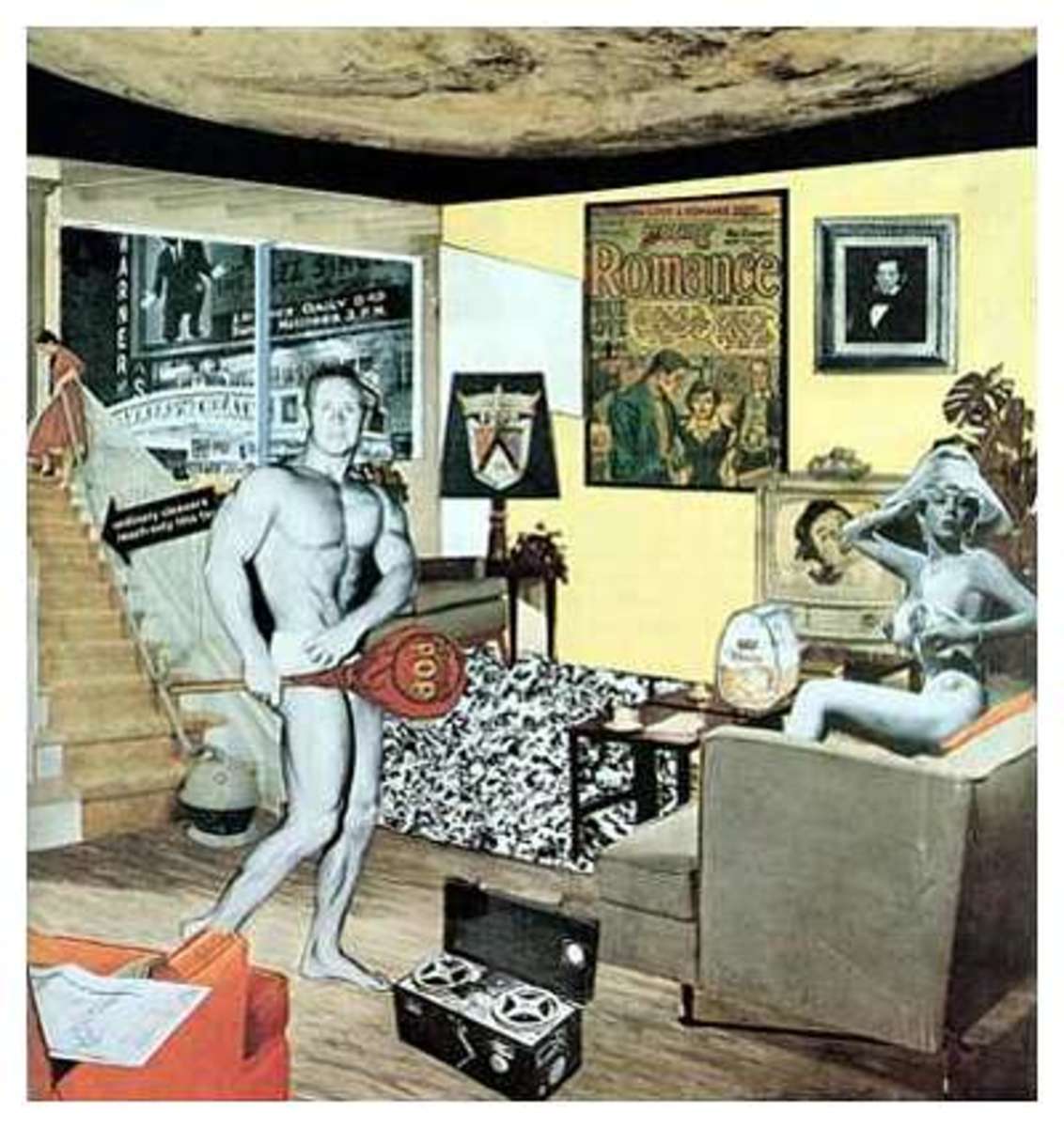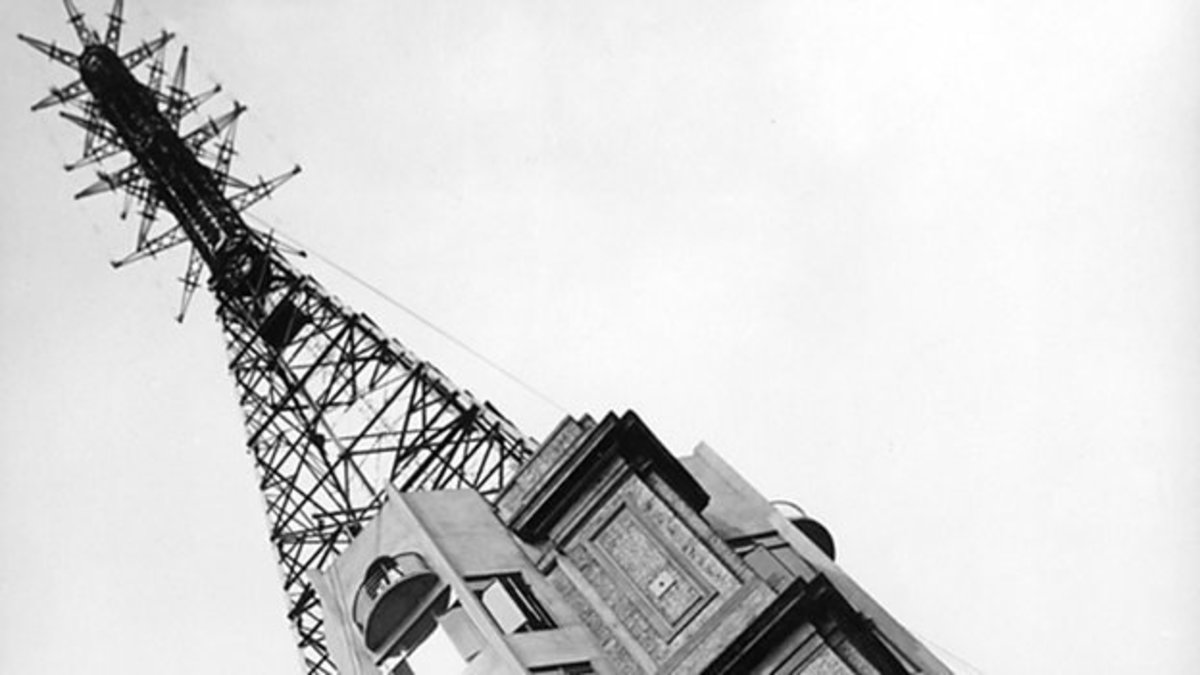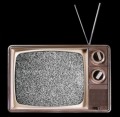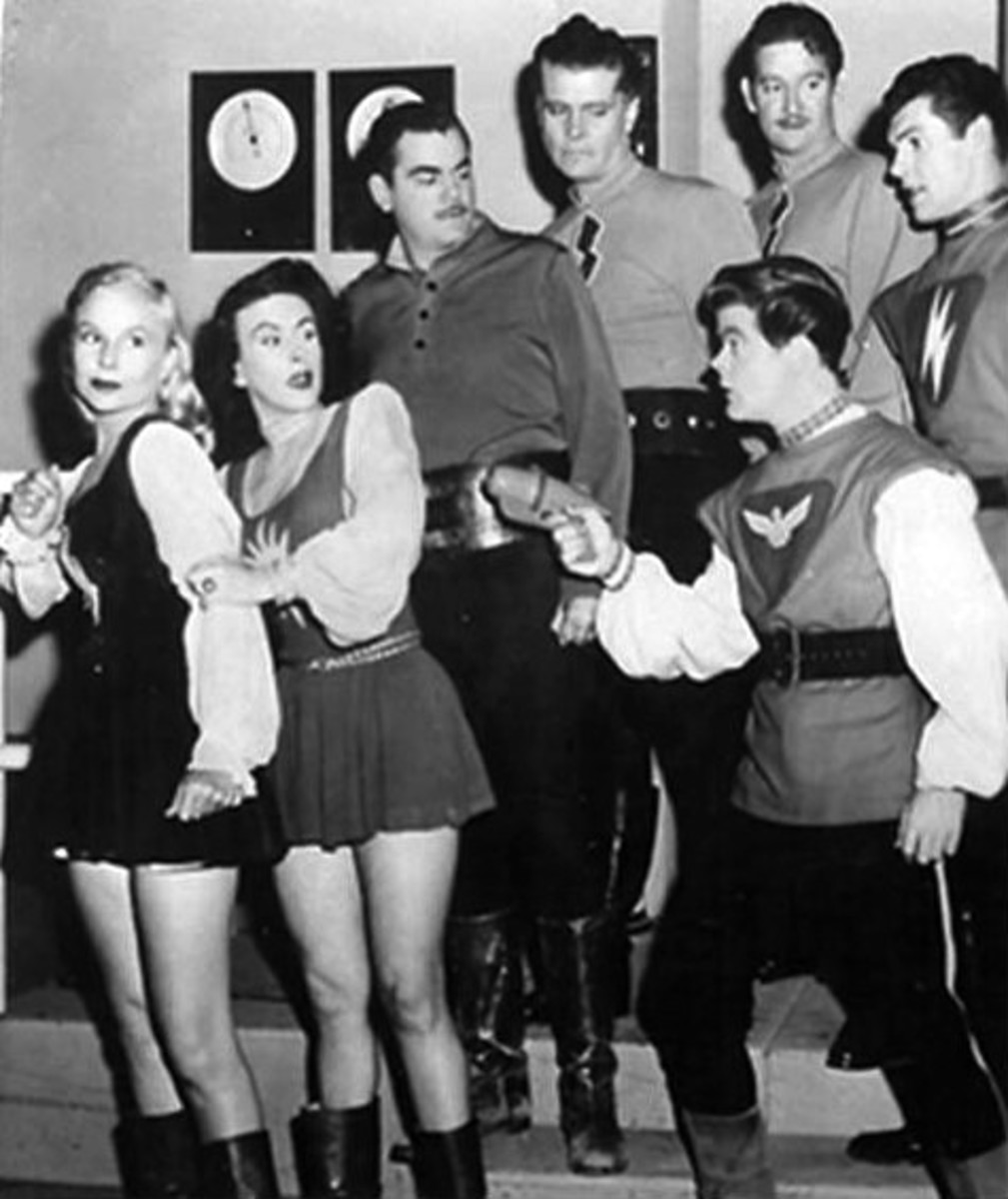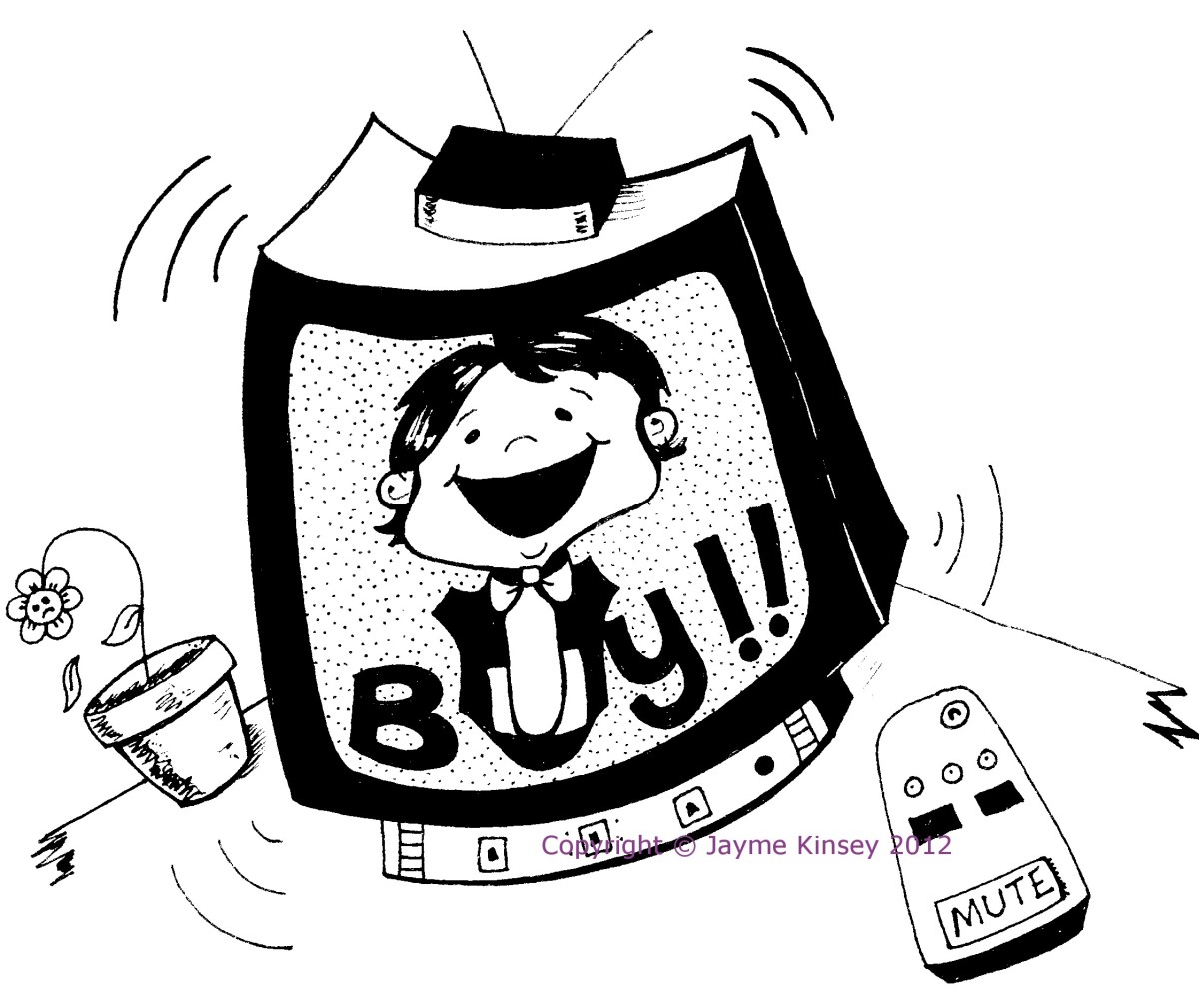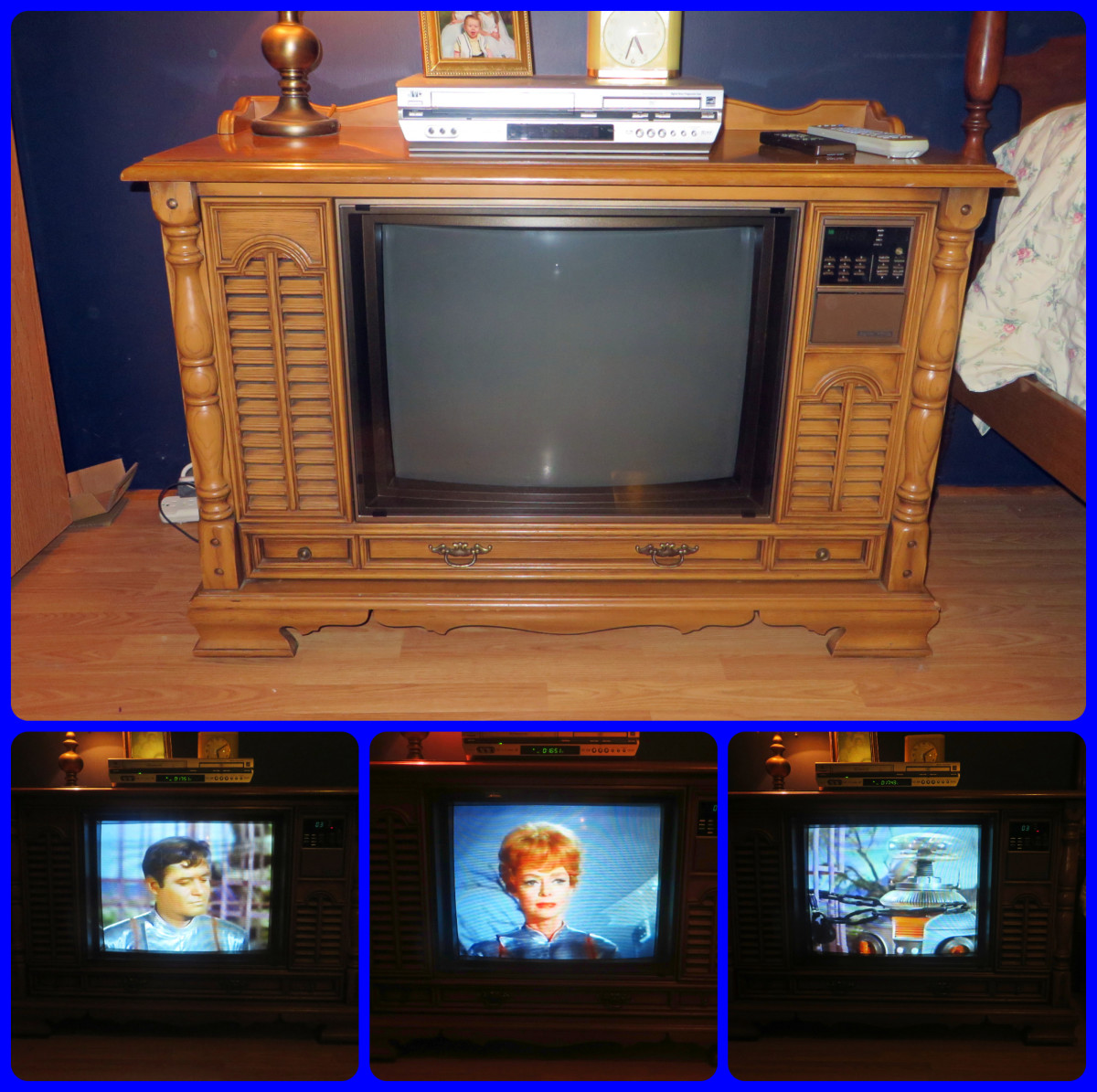Television Innocence Lost
TV's Early Years
In July of 1941 commercial television first began broadcasting in the United States. In December 1941, the United States entered World War II. From 1942 to 1945, sales of TVs and most public broadcasting operations were suspended. With respect to war efforts, entertainment and free enterprise historically (prior to 1960) had generally, although not uniformly, supported the involvement of the U.S. in international conflict. World War II was a landmark of solidarity for the U.S., both nationally and internationally. The war also gave birth to a new generation that would eventually become dissatisfied with much of life in America and around the world. Right or wrong, this new generation would open the door to social upheaval, and television would both display it and guide it.
In its early years television programming revolved around sporting events, and short newscasts which primarily covered the war in Europe.The slow development of television technology during the war years resulted in only six experimental stations in five major cities. It wasn't until 1947 that commercial television began to expand with programming evolving from news and sports to Milton Berle and Jack Benny. Popular radio programs were adapted for television, and "Howdy Doody" led the way in children's programming. Animation started with a simple Mickey Mouse cartoon short, and has since expanded into the seemingly limitless reaches of human imagination.
As television markets expanded in the late 1940s advertisers jumped on board in large numbers. "The Ed Sullivan Show" popularized the variety series, and "Meet the Press" brought news conferences to larger and larger audiences. In the 1950s "I Love Lucy" ushered in filmed situation comedies. Television shows had previously been live productions. The TV game show became popular when "The $64,000 Question" debuted in 1955.
Some of the Game Show Prizes Awarded by Television Sponsors:
- Money (from small cash prizes to millions)
- Cars (sub-compact, luxury and sports cars)
- Vacation trips (theme park tickets to round-the-world cruises)
- Appliances (from televisions to washers and dryers)
- Groceries
- Clothing
- Personal "makeovers"
- Home improvements and services
- A "Dream House"
- A college education
- A Dream Date
- Pets
- Television guest appearances
- Toys and board games
- Dinner and a Broadway Show
The Fascination
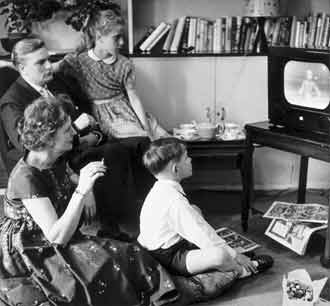
It may be worth noting at this point that the U.S. Department of Commerce recognized television's advertising influence in the 1949 statement: "Television's combination of moving pictures, sound and immediacy produces an impact that extends television as an advertising medium into the realm of personal sales solicitation." That advertising power clearly drove programming expansions, and as the number of available channels today would indicate, the programming and advertising possibilities are limitless.
The BBC
Social Menace?
Television was not universally welcomed in it's developmental years. It was once proclaimed by Sir John Reith of the BBC to be "a potential social menace of the first magnitude." He compared it to smallpox, bubonic plague and the Black Death. The question then is, has TV achieved that undesirable potential? Some evidence would indicate so. The impact of media on society can only be estimated, however if one considers the money involved in television advertising, it would seem that its influence is great. With that accepted, the material presented to its viewership could be very powerful.
It has been said that television programming reflects society. Merchandise sales associated with various television shows makes it clear that it also influences society. Hair styles and fashion trends are other examples of media influence. Toys, video games and breakfast cereals are sold to kids by TV stars and cartoon characters. Cars, personal care products and insurance for adults are sold to us by television personalities. The advertising power of television has expanded with increasing commercial time. Entertainment has evolved to appeal to changing audiences. As senses adapt, new stimuli are required to maintain viewership. The differences between early and modern television programming might be most obvious if examples of each were shown back-to-back... Something like this:
- "Ozzie and Harriet" followed by "Baywatch"
- "I love Lucy" followed by "Desperate Housewives"
- "Dragnet" followed by "CSI"
As the years pass and society changes, the old norms and ideals recognized in radio and television have taken a place in the category sometimes called "oldies", "antiques" or "vintage". They no longer stimulate viewership and sales. The viewer/consumer now expects and purchases media saturated in explicit violence, sex and profanity. We are no longer entertained by Little House on the Prairie or Pong the video game. We require more for stimulation; and when we get more, the more desensitized we become. As if in a cycle of addiction, we need more, and we're willing to pay for it.
Mind Control?
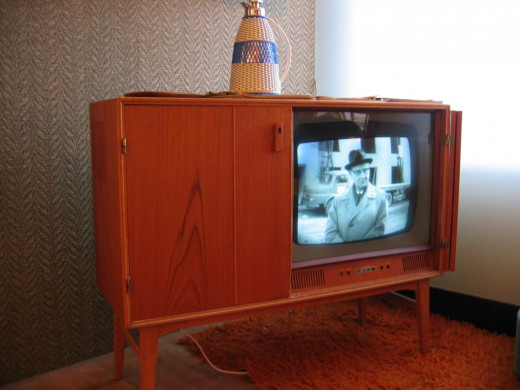
The Reality Balance
The creation of television absolutely contributed to societal change. It seems lately that every major technological breakthrough we experience is communication related. As population expands we have to bring the world closer to experience prosperity. Communication and sharing of information are the keys to that. But innocent benevolent endeavors so often fall prey to corruption; and profit and pleasure become the goal of so many of man's advancements.
Development of a good future should be a significant consideration in every endeavor. Television doesn't have to be merely a twenty-four hour source of pleasure. News, information, education and entertainment can be balanced. But human beings often have trouble with balance. Television should reflect reality without creating it or distorting it; and the weight of the advertising gold that is available in the medium of television too often controls the quality and social value of the product that is ultimately delivered to children.
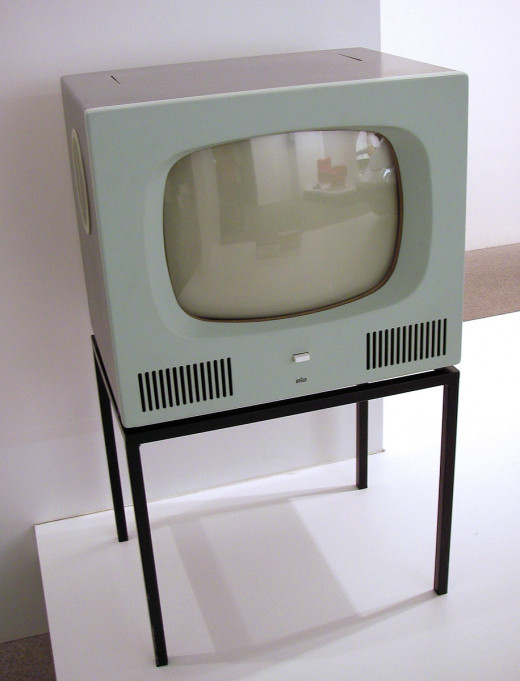
Entertainment Today
Television is now just a slice of society's entertainment pie. Programming is streamed as well as broadcast. News, weather, sports and entertainment is available 24 hours a day, and on demand. Even the physical structure of the "set" itself no longer resembles the bulky heat-generating "tube" of old. Televisions are slim flat panels in a wide variety of sizes, light enough to hang on any wall. They are cable, satellite, and internet ready with digital audio. With all of the changes in broadcasting and programming, television remains the main audiovisual advertising medium by which consumers are reached.
Your Assignment For Today:
© 2011 Mr. Smith

